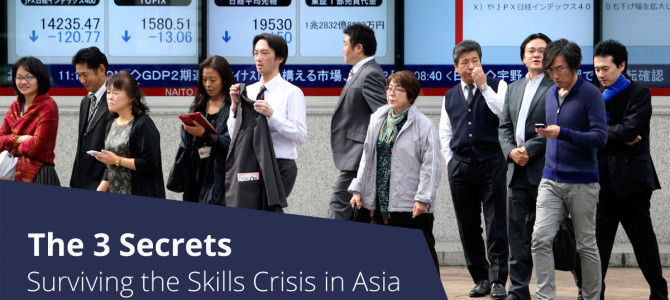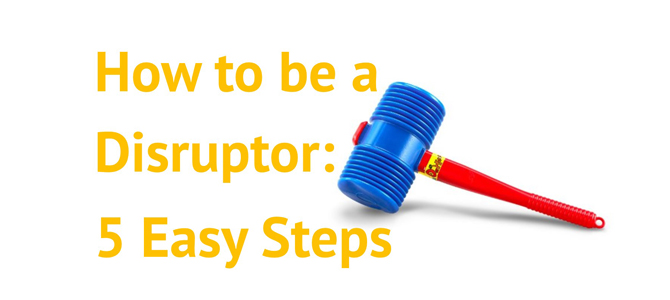The 3 Inside Secrets to Managing Millennials
https://motivo.asia/wp-content/uploads/2021/06/The-3-Secrets-to-Managing-Millennials-670x300-1.jpg 670 300 Russell Potter Russell Potter https://secure.gravatar.com/avatar/ed2cca46b191c3f4a1ee02d9ea4df3e7?s=96&d=mm&r=gAs a leadership trainer and HR Consultant, the question I am asked probably more than any other, is, “How do I deal with Millennials?” Millennials are the group born between the mid-90’s and mid-2000s and are the generation now entering the workplace. Organizations are confused by the group, who they see as transient job hoppers. Perennially un-satisfied, Millennials are often stereotyped with either a voracious appetite for their own personal growth or a healthy disrespect for those in authority or both. The word, “Narcissistic,” is often mentioned, which I will come back to later. Millennials are often perceived as pretentious rather than humble, which in a team setting translates into irritation and conflict.
These are the stereotypes, and stereotypes are born when individuals from one social group view another social group as one entity, as if the other social group were one person with a single personality. The failure to see the group as individuals with individual personalities, but with some shared ideas, creates a problem. Not all Millennials are created equal. The reason this creates a problem is that it excuses organizations from their responsibility to provide the highest standard of leadership and people management to ALL employees.
In many ways, it’s not that Millennials are difficult, it’s that previous generations were prepared to suffer well in organizations with leadership styles based on fear and control where learning and growth were way down the priority list. In such organizations, the unspoken goal is not to lose, rather than to try to win. Millennials don’t seem too comfortable with this.
Some background, every new generation entering the workplace arrives with the same bewilderment from leaders, Generation X had the same reaction from the Baby Boomers. Generation X (of which I am a member) shared the dedication to hard work that Baby Boomers did, but they lacked the compliance and were more keen to challenge systems which they felt had room for improvement.
I do agree that Millennials present a challenge for organizations, which for them is unavoidable because, as the “New Crop” entering the workplace, Millennials are the most cost-effective employees. Most Management Consulting companies would cease to exist without them.
We need to be truthful with ourselves here, the reason that the question, “How do we deal with Millennials,” is asked is because all organizations need an influx of fresh and cheap labor, and graduates and school leavers provide that. Graduates enter with low pay and are expected to do at least a couple of years of doing the hard work and, “Learning the ropes,” before maybe moving to a better position, hopefully within the organization.
The system works because it’s true, you do indeed need to learn the ropes which means understanding the market, organization and how to grow the business armed with an understanding of both. Unfortunately, this generation isn’t just accepting this system quite like the last and are highly motivated to move to a better position as soon as possible.
One of the things I hear a lot is that Millennials are, “Narcissistic,” meaning that they are selfish, exaggerate their abilities and feel entitled. It is also said that they lack humility. I’ve worked with Millennials in organizations and interviewed hundreds in the past few years, and I think this a touch unfair and misunderstood. Let’s not mistake a belief in equality with narcissism. Millennials have a strong belief, as Gen X did, in equality. They enter the workplace and see their more senior colleagues getting paid more them they do and, as the more junior, less experienced employees, they often do the more laborious, monotonous tasks. To their mind, they are just as smart and work hard, and see this situation as unfair. Of course, most of us would agree that their perception belies a lack of experience and maturity, but to label it “Narcissism’ would be inaccurate. Equality, yes, immaturity without a doubt, but let’s not forget how old they actually are, and that Gen X had EXACTLY the same attitude when they were the “20 somethings” entering the workplace.
So, what to do? Here’s my inside tips from HR consulting, headhunting, leadership training and coaching at large organizations in Asia. There are of course many interventions but here’s my top 3.
1. Don’t treat millennials any different. The US army doesn’t change it leadership style just because the latest generation has different attitudes and values. It chooses wisely, uses an excellent leadership framework and ejects anyone who doesn’t make the cut. Millennials also don’t want to be treated differently but they do want to be treated fairly. Evidence from Gallup suggests that patronizing Millennials with offices that look like a playground doesn’t work, although it does work on Baby Boomers, which I find very amusing.
Make sure that you invest in genuinely excellent leadership at all levels of Management and apply excellent leadership to ALL employees irrespective of age. What does that mean? It means that leaders must understand how to articulate a clear vision, judge the abilities of team members well and assign work appropriately, constantly growing each team member in terms of skill and thinking, and then motivating team members to overcome their fears, to contribute their best, and strive together as a team. That’s easier said than done and requires very specific skills that can be learned in a classroom, but, with the commitment of the organization, it is achievable. The outcome is teams that are able to make a significant contribution far and above the sum of their parts. “Command and control,” is the opposite. It’s enforced compliance where performance is as strong as the weakest part. Although it definitely has a place, especially fresh graduates and school leavers, Millennial, Gen X or Baby Boomer, which one would you prefer to work in? They key is to change your style as the employee grows.
2. Don’t make promises you can’t keep. If you promise a Millennial that they will be promoted within 1 year, and it doesn’t happen, the Millennial will look elsewhere without a thought, they will walk.
It’s true that Millennials are ambitious, and they often need a parental style of leadership that’s encouraging and grounding at the same time. Like all of us, they feel the need to make progress, but they often feel that need more acutely than most others. Making promises is not the answer but succession planning is. One of my favorite quotes is by Richard Branson who said, “Train them well enough that they can leave, treat them well enough that they will stay.” Sage advice indeed, and the best way to treat all employees, especially Millennials. It’s worth remembering that the #1 reason for an employee resigning is a bad boss. Although “Trigger/Final Straw” would be a more accurate term, great leadership has the ability to work both ways and many employees, Millennials included, will stay for an excellent leader that they can learn from and trust.
3. Personal growth. Many Millennials are into rapid career progression through accelerated personal growth. They possess bundles of outward confidence and are hungry to learn, with the expectation that they will sprint up the career ladder. Whilst the latter is unlikely, the former is a very real phenomenon.
They have been bought up in a Tony Robbins/Richard Branson world that tells you that if you can dream it, you can have it and that your unfounded negative beliefs and idleness hold you back. Tony and Richard may well be right, but I see that behavior with ALL age groups now, especially Generation X in Asia, entering their 40s and looking to secure a lucrative future.
Millennials are into learning and personal growth (like all people) and showing your commitment to that is the key to keeping them happy. This is standard best practice for ANY age group and should be personalized through great leadership and not only through cumbersome HR initiatives. The concern is, however, that the thirst for personal growth is just that, personal growth, with the expectation of a new job (anywhere) at the end of it.
Leaders need to make personal growth tightly aligned to the delivery of the business strategy and immediate plans for business growth, as opposed to vacuous “Capabilities.” Many Millennials see that the employer is a vehicle for their learning with the employer there to serve their needs. Great leaders need to give a different message, “Grow yourself by growing my business.” This honest and authentic message is to the point and has no implied promises, and authenticity is essential to being a great leader…of any generation.
Watch the video here https://youtu.be/c4T1ltc0-Bg
Russell Potter is Senior HR Consultant at Motivo. Visit www.motivo.asia for more about our leadership training and HR consulting in Asia.










